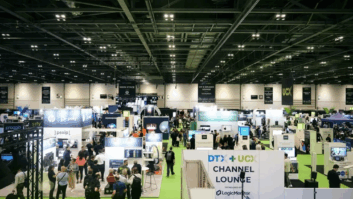 The modern workplace has undergone significant changes in recent years, creating a massive shift in culture, space planning, and technologies, all of which influence emerging workplace trends. One key factor driving this transformation is modularity. Some workspaces have taken the concept of flexibility to new heights.
The modern workplace has undergone significant changes in recent years, creating a massive shift in culture, space planning, and technologies, all of which influence emerging workplace trends. One key factor driving this transformation is modularity. Some workspaces have taken the concept of flexibility to new heights.
Offices are being designed with just a few meeting rooms with doors. Cabinetry is mounted on wheels, and partition walls between areas are entirely mobile, allowing teams to create personalised workspaces anywhere in the building. These types of work environments give us a glimpse into the future, where the limitations of how employees use their workspaces are virtually eliminated through modular design.
RETHINKING MEETINGS
In terms of current workplace trends, hybrid and remote work models are here to stay, especially in industries that have embraced these changes. This shift requires businesses to rethink how meetings are conducted, ensuring that collaboration is effective, regardless of where participants are located. One of the critical aspects of this is ensuring a unified and equitable experience for everyone, particularly in virtual meetings.
For instance, camera technology has evolved significantly, with many modern systems offering tiling features that allow all participants to be equally sized on screen. This equitable sizing is crucial for creating a level playing field in virtual settings, where no participant appears larger than another, which can be distracting.
Moreover, advanced technology now uses AI to enhance the virtual meeting experience further. AI ensures that not only are participants equally sized on the screen, but it also tracks movement within a room. If someone moves while on camera, the AI adjusts the framing to ensure the person remains centred and properly in view. This seamless adjustment makes the virtual experience feel more natural, improving interaction and engagement for remote attendees.
From my perspective, I believe that audio plays a critical role in this tech evolution. While poor video quality can be tolerable in some situations, bad audio quality can have a much more significant impact. Communication is primarily verbal in meetings, and if audio is unclear or choppy, it can lead to misunderstandings, lost time, and even lost business. Clear, reliable audio is therefore essential for productive and efficient communication, and it is a top priority for us.
As we continue to advance in the world of hybrid and remote work, the workplace is becoming a more flexible and technologically integrated environment. This evolution is an exciting opportunity to design spaces and experiences that empower employees and teams to collaborate seamlessly from anywhere. It has become critical for organisations to future-proof their offices by implementing innovative audio solutions that support this new era of work. Whether in-person or remote, high-quality audio will remain a crucial component of effective comms in the modern workplace.
This article also featured in our free enterprise AV eBook, available now – click here to access.







